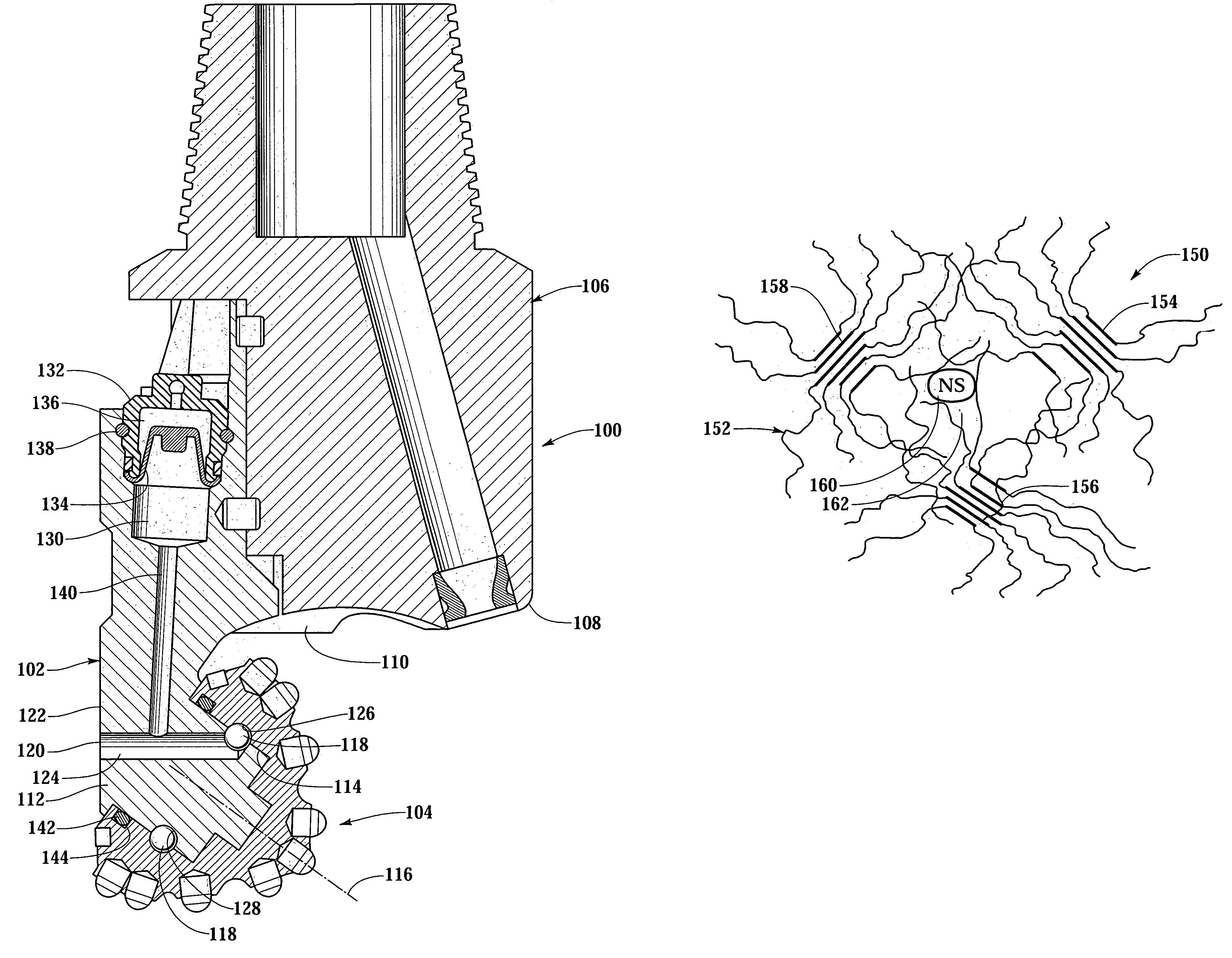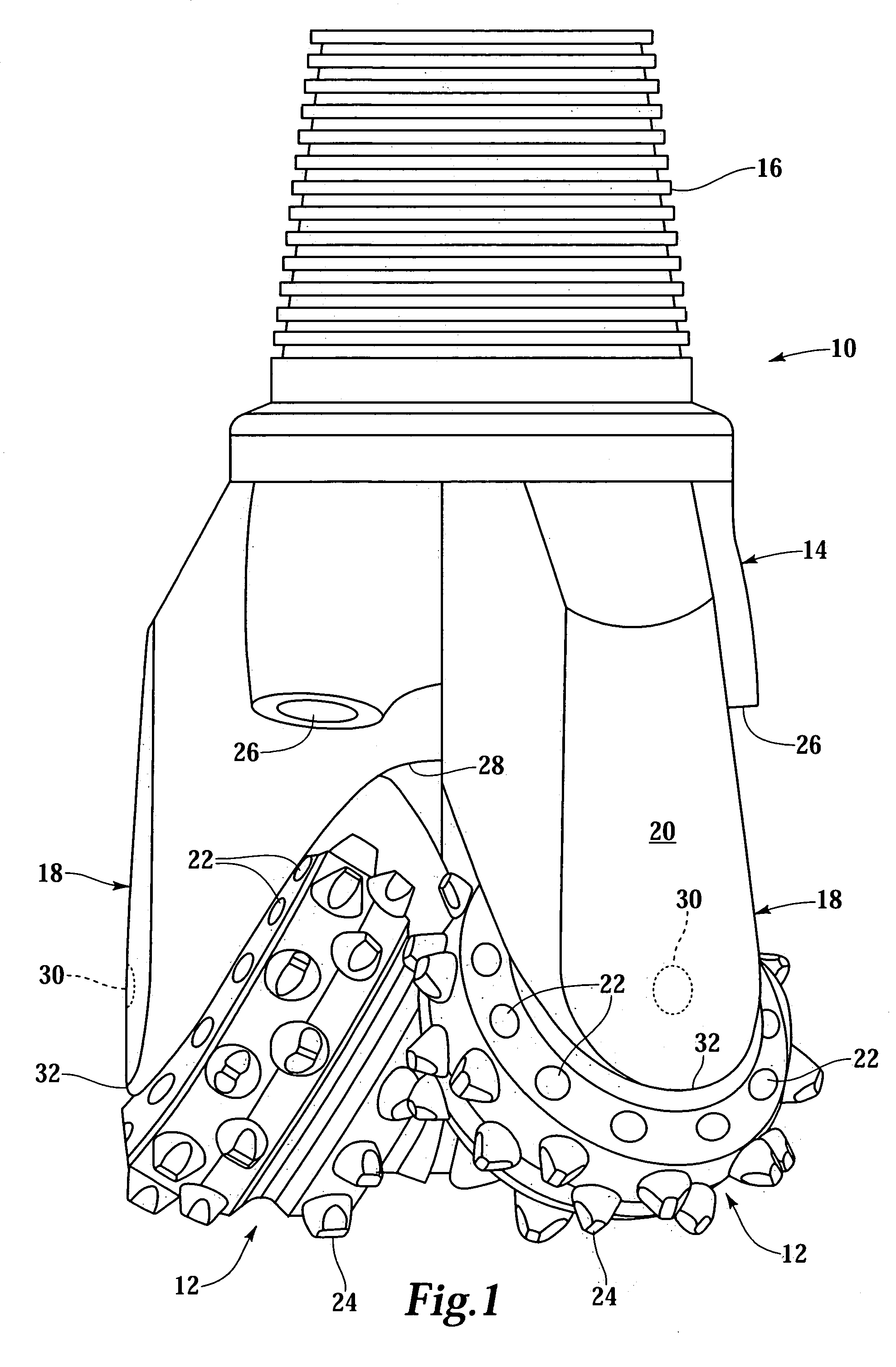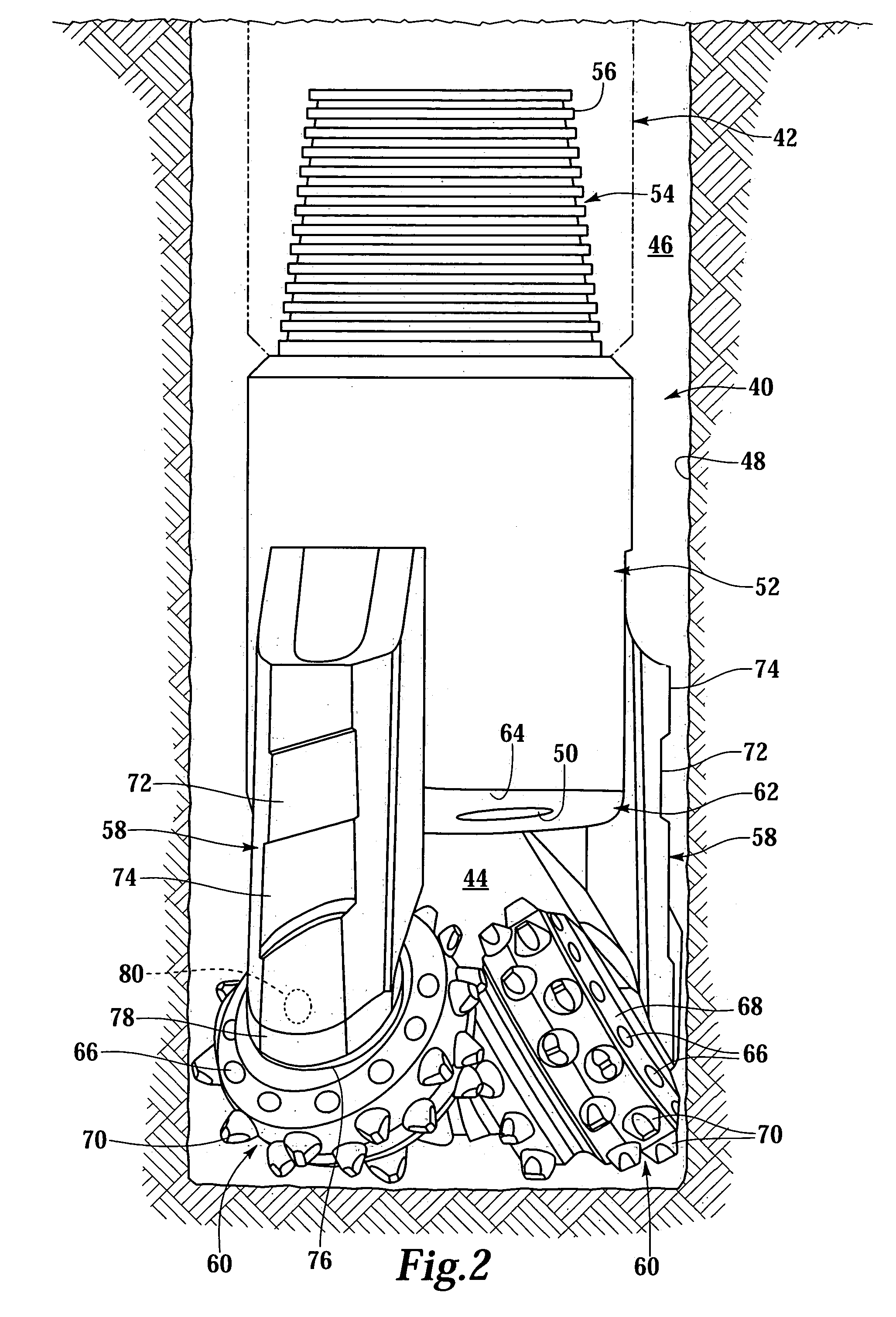Drill bit having an improved seal and lubrication method using same
a technology of lubrication method and drill bit, which is applied in the field of drill bits, can solve the problems of rig operator's decision, difficulty in determining when to replace drill bits, and difficulty in determining the operating condition, performance and remaining useful life of drill bits, and achieves improved sealing, low coefficient of friction, and high resistance to heat and abrasion.
- Summary
- Abstract
- Description
- Claims
- Application Information
AI Technical Summary
Benefits of technology
Problems solved by technology
Method used
Image
Examples
Embodiment Construction
[0028]While the making and using of various embodiments of the present invention are discussed in detail below, it should be appreciated that the present invention provides many applicable inventive concepts which can be embodied in a wide variety of specific contexts. The specific embodiments discussed herein are merely illustrative of specific ways to make and use the invention, and do not delimit the scope of the present invention.
[0029]Referring initially to FIG. 1, therein is depicted a rotary cone drill bit of the type used in drilling a wellbore that traverses a subterranean hydrocarbon bearing formation that is schematically illustrated and generally designated 10. Rotary cone drill bit 10 includes a plurality of cone-shaped rotary cutter assemblies 12 that are rolled around the bottom of a wellbore by the rotation of a drill string attached to drill bit 10. Each rotary cutter assemblies 12 is rotatably mounted on a respective journal or spindle with a bearing system, sealin...
PUM
 Login to View More
Login to View More Abstract
Description
Claims
Application Information
 Login to View More
Login to View More - R&D
- Intellectual Property
- Life Sciences
- Materials
- Tech Scout
- Unparalleled Data Quality
- Higher Quality Content
- 60% Fewer Hallucinations
Browse by: Latest US Patents, China's latest patents, Technical Efficacy Thesaurus, Application Domain, Technology Topic, Popular Technical Reports.
© 2025 PatSnap. All rights reserved.Legal|Privacy policy|Modern Slavery Act Transparency Statement|Sitemap|About US| Contact US: help@patsnap.com



